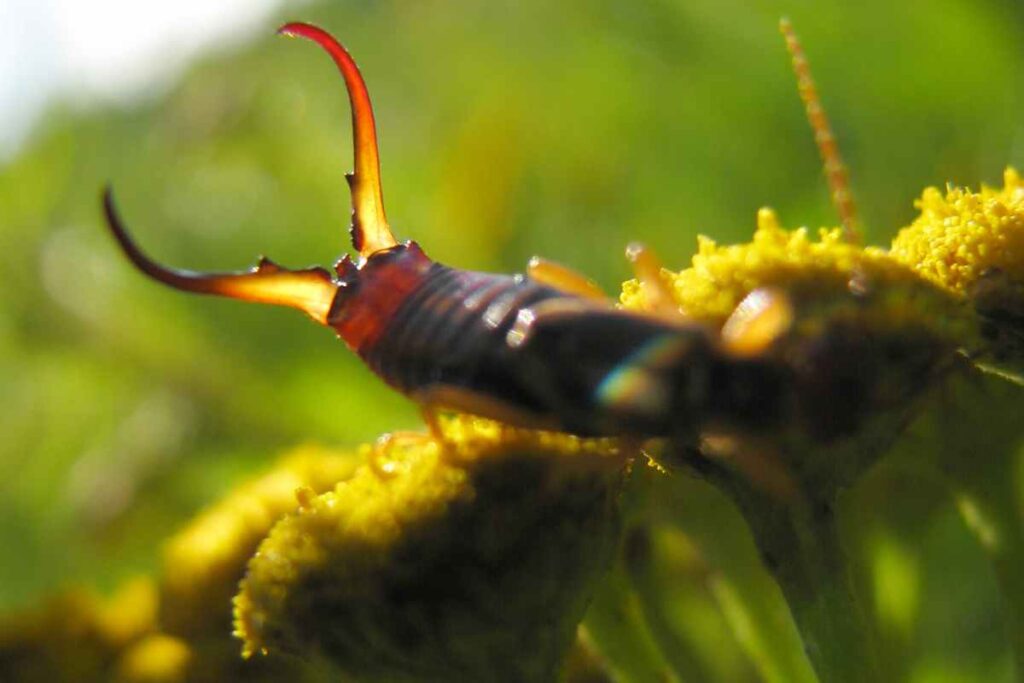Earwigs may not seem like a major concern at first glance, but they can do considerable harm to your lawn.
These moisture-loving insects are often overlooked until they start causing visible damage.
Their preference for young grass blades means your lawn could suffer from unsightly patches if they’re not controlled.
In this article, we’ll look at how earwigs affect your lawn and what steps you can take to keep them at bay.
How Earwigs Affect Your Lawn?
These pests are drawn to the moisture-rich environment of a well-watered lawn, where they hide during the day and emerge at night to feed.
Their nocturnal activity often goes unnoticed until the damage becomes visible. In addition to chewing on grass blades, earwigs are known to create small burrows in the soil, which can disturb the roots and contribute to uneven growth.
This combination of feeding and burrowing can weaken your lawn, making it more susceptible to other pests and diseases.
Identifying the Need for Treatment
Before diving into treatment options, it’s essential to determine if your lawn actually requires intervention. While a few earwigs might not pose a significant threat, a full-blown infestation can cause severe damage.
Recognizing the signs of an earwig infestation is crucial for timely action. Common indicators include:
- Visible earwigs crawling on your lawn, especially at night
- Small, chewed-on patches of grass
- Presence of earwig eggs or nymphs
Effective Earwig Lawn Treatment Strategies
Dealing with an earwig infestation can be frustrating, but there are several approaches to consider. Many homeowners prefer to start with natural remedies, while others opt for chemical treatments. Let’s explore both options.
Natural Remedies for Earwig Control
Many homeowners prefer to tackle pests using natural methods. There are several options available for
organic earwig control:
- Diatomaceous earth: This powdery substance is derived from fossilized algae and acts as a natural desiccant, killing insects by dehydrating them.
- Boric acid: Using boric acid for earwigs is a powerful yet safe solution. This natural mineral acts as an effective insecticide, dehydrating the insects when ingested, making it a reliable method for controlling earwig infestations.
- Neem oil: Extracted from the neem tree, this oil disrupts the insect’s hormonal system, making it an effective deterrent.
- Beer traps: Earwigs are attracted to the smell of beer. Fill a shallow dish with beer and bury it up to the rim in your lawn.
- Beneficial insects: Introducing natural predators like lacewings or spiders can help control earwig populations.
While natural remedies are generally safe for the environment, they might not be as effective as chemical treatments, especially for severe infestations.
Chemical Treatment Options
If natural methods fail to control the earwig problem, chemical treatments might be necessary. There are various insecticides specifically designed for lawn care available in different formulations:
- Granular insecticides: These slow-release products are applied to the lawn and gradually release active ingredients.
- Liquid insecticides: These can be sprayed directly onto the lawn or used as a drench.
- Organic insecticides: Derived from natural sources, these options are less harmful to the environment but may require more frequent applications.
Always follow the instructions on the product label carefully to ensure safe and effective use. Remember to protect yourself by wearing gloves and protective clothing when applying chemical treatments.
Preventive Measures to Keep Earwigs Out of Your Lawn
Preventing an earwig infestation is often easier than dealing with one.
Implementing the following lawn care practices can help create an unfavorable environment for these pests:
- Regular lawn maintenance: Keep your lawn healthy by mowing regularly, watering appropriately, and fertilizing as needed.
- Thatching and aeration: These practices improve soil drainage and reduce moisture levels, making your lawn less attractive to earwigs.
- Moisture control: Earwigs thrive in damp conditions. Reduce moisture by improving drainage and avoiding excessive watering.
- Debris removal: Clear away fallen leaves, branches, and other organic matter that can provide hiding places for earwigs.
- Plant selection: Some plants are more susceptible to earwig damage. Choose varieties that are less attractive to these pests.
By following these preventive measures, you can significantly reduce the risk of an earwig infestation.
When to Call a Professional Pest Control Service
If you’ve tried various DIY methods without success, or if the infestation is severe, it might be time to call in an
earwig pest control service.
A pest control service has the expertise and equipment to effectively eliminate earwigs from your lawn.
Consider hiring a professional if:
- The infestation is widespread and causing significant damage.
- You have tried multiple DIY methods without results.
- You are concerned about the safety of using chemical treatments.
We, as professional pest control experts, offer treatment plans tailored to your specific needs and provide guarantees for our work.
Our goal is to ensure that your pest problems are effectively addressed with solutions that suit your situation perfectly.
Achieving a Healthy, Earwig-Free Lawn
By combining effective treatment strategies with preventive measures, you can successfully eliminate earwigs from your lawn and maintain a healthy, lush landscape.
Remember that consistent lawn care is crucial for preventing future infestations.
Regular mowing, watering, fertilizing, and dethatching contribute to a strong and resilient lawn that is less susceptible to pests.
By following these guidelines and staying vigilant, you can enjoy a beautiful, earwig-free outdoor space.


